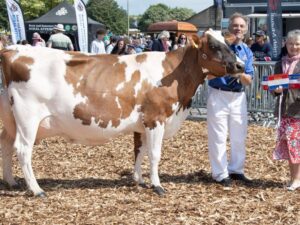Calves and youngstock are the cornerstone of dairy herds, and ensuring the best management from birth through to first calving will have a positive impact on the future success of the herd. And a set of Wynnstay Calf Roadshows (8-10 May) will explain to farmers how to guarantee this.
Bringing together experts from across the dairy industry and the globe, the events offer a unique opportunity for farmers to pick their brains and gain practical advice.
So what are the top considerations when it comes to calf management?
- Consider the dairy cow diet
The diet of pregnant dairy cows can have lifelong effects on their calves – either positively or negatively, says Adam Geiger, research nutritionist for dairy and colostrum at Zinpro, who is the keynote speaker at the Calf Roadshows. “If we don’t get the mother’s nutrient requirements correct, and reduce stress for her, the calf can have deformities as a result,” he says.
- Bacteria is the number one killer of calves
It’s important to find ways to consistently limit bacterial contamination. “Most bacteria come from feeding equipment, not from the environment or the mother,” he says.
- Manage heifers
Managing heifers correctly can ensure they reach their lifetime productivity potential. “We need to make sure that they’re not getting respiratory disease, by measuring ammonia levels in the air,” says Mr Geiger.
Producers should also be aware of the impact of mastitis on the herd. “If a large percentage of heifers are calving in with subclinical mastitis in their first calving, then those cows will experience at least a 10% reduction in lifetime milk yield.
“The number one way we can prevent that is environmental and nutritional management.”
- Feed calves and heifers for performance
Feeding calves for performance can have a positive knock-on effect. “If we feed calves to promote more growth, these calves will grow faster, and their mammary glands will grow faster too. So, they will produce more milk in their first lactation,” he says.
- The weaning process
As the amount of milk replacer fed to calves increases, the protein content of the liquid diet becomes limiting. “The more milk we feed, the more important the protein is in the calf starter feed,” he explains.
“When it comes to feeding pre-weaning forages, we can determine whether it’s a good idea or not, depending on the starch content of the calf starter, the level of stress the calves are under – and a number of other things.”
A slow and gradual weaning process is the most beneficial for calves. “An abrupt weaning process will decrease starch digestibility for the calves, and compromise growth. Visually, we can see that in calves through inconsistent faeces and acidosis – which presents as bubbly manure.”
- Consider the role of trace minerals
Zinc and copper are key minerals for calves. “Zinc is very important for immune function, but we need to be careful we’re not over-supplementing copper because this can lead to issues with copper toxicity,” says Mr Geiger.
“By focusing on trace mineral nutrition, calves can easily gain at least 5kg by the time they’re weaned.”
The success of the future herd relies heavily on good calf management. “There are thousands of ways to rear calves, but by keeping them healthy, it’s mostly going to work.”
Further information
As well as Adam Geiger, delegates can hear from a range of speakers at the Roadshows, including vets and experts from the Wynnstay team.
Register by emailing [email protected] by 5 May 2024.
Farmers are invited to attend:
Wednesday 8th May, 7:00pm – 9:00pm:
The Bell Inn, High Street, Yatton Keynell, Chippenham, SN14 7BG
Thursday 9th May, 10:00am – 2:00pm:
Huntington Hall Farm, Huntington, Chester, Cheshire, CH3 6EA
Friday 10th May 10:00am – 2:00pm:
Wheatlands Farm, Walcot Lane, Pershore, Worcestershire, WR10 2AL






